Rick and I recently traveled to the town of Simancas located about 10 km outside Valladolid. The pueblo itself dates back to before the 9th Century and the time of the Moorish occupation of Spain. People think of Southern Spain when they think of the Moors, but they penetrated a good ways to the north as well. When travelling the autovia the castillo of Simancas dominates the skyline. It was converted into the national archives in the 16th century and is still open to researchers today.
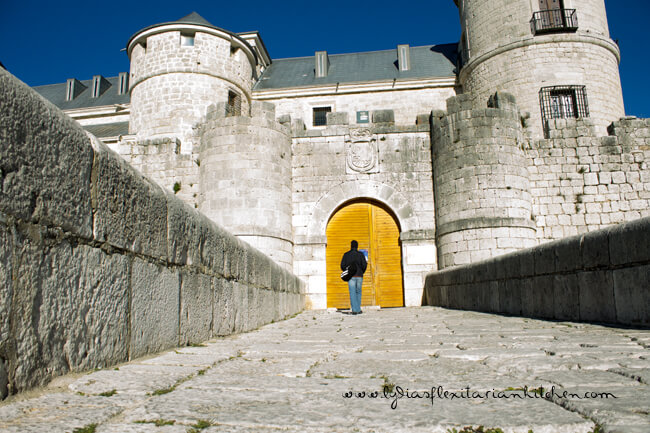
Simancas got its name from the legend of a Moorish Emir who demanded a yearly tribute of 100 young virgins to stock his harem in return for helping King So and So of Asturias take his throne (nice, huh? We’ve come a long way, baby). A group of seven girls cut their right hands off in defiance, knowing that if maimed they would no longer be acceptable. “Septi manchas” means “seven maimed” in Latin which eventually became Simancas.
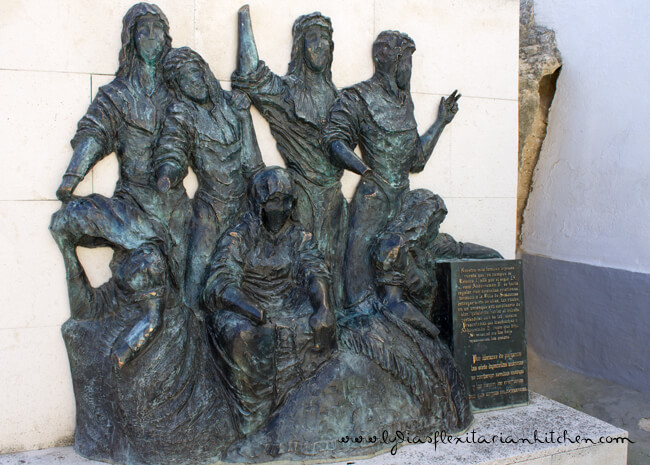
There has been extensive urban build up around the town, due in part to it’s proximity to Valladolid. All the modern conveniences exist for those who live in Simancas, with lovely public spaces and a modern theater that hosts a short film festival every November.
There are also hostels for those travelling the Camino de Madrid, a pilgrimage route which starts in Madrid and ends 320 km later in Santiago de Compostela. The trip takes about two weeks to complete and is one of the southern routes of the Camino de Santiago. {As an aside, the film The Way starring Martin Sheen (affiliate link)and Emilio Estevez is about a group of pilgrims travelling the most famous Camino Frances, the 800 km French route that begins in France and crosses the north of Spain. The film is well acted and the scenery is luscious}.
The old pueblo remains largely intact and it’s delightful to walk around the narrow streets and admire the medieval Plaza Mayor and red roof tiled homes. Be on the look out and listen for vehicles because you have a narrow side walk. In some areas you have to duck into a door way to allow the cars to pass.
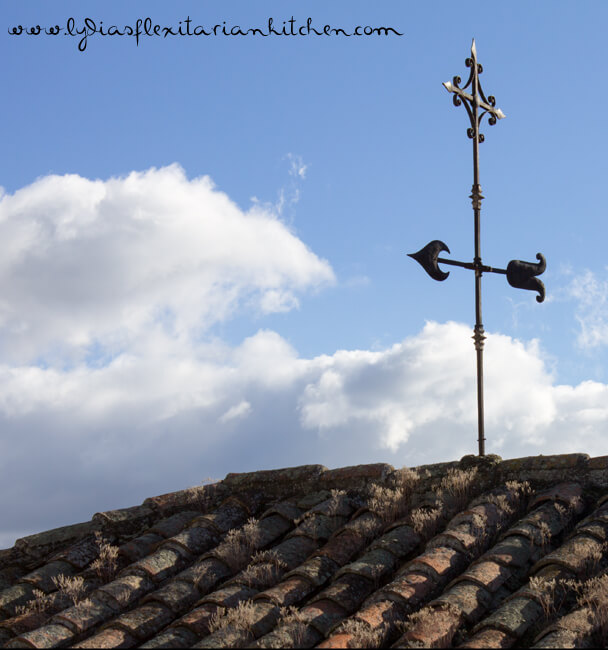
After a daunting walk down a very steep hill, you’ll come to Simancas’s other claim to fame, the medieval bridge of seventeen arches just below the conflunce of the Pisuerga and the Duero. According to the information boards around the bridge, there has been a bridge of some sort here since the days of the Romans and the location had strategic importance during the Reconquista of Spain and the Peninsular Wars of 1807-1814.
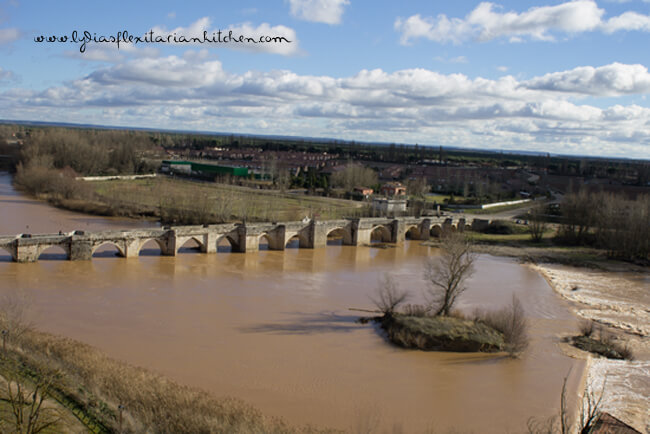
The spot is picturesque but on the day Rick and I visited, it was cold and blustery. At least the sun was shining. I’m not exaggerating the extent of the slope, it helps if you have had experience walking a roof, or feet like a goat. There are benches to rest on, and they’ve been leveled because there are no flat areas to stand or sit. After walking back up the hill to the town we were in desperate need of refreshment. Fortunately there were several establishments to choose from. The one we picked featured the most delicious, melt in your mouth jamon croquetas I’ve ever had.
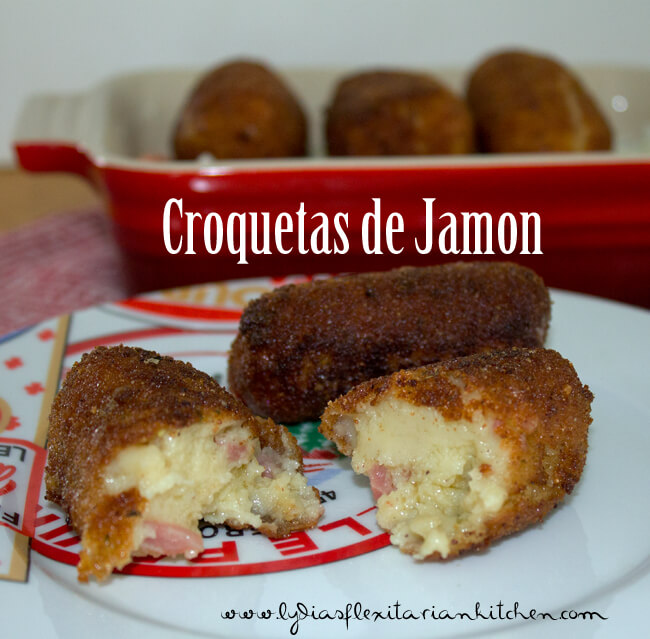
These are made with a very thick cooked dough that’s more or less a heavy white sauce but made with olive oil instead of butter. After it sits and cools, the dough can be formed into croqueta shapes, then breaded and fried. Since you only eat one or two as a tapa, the heaviness isn’t overwhelming. In fact, it’s fortifying with a glass of wine or beer. Especially after tackling a hill only goats should climb while fighting a head wind on the way up!
You should get about a dozen croquetas from this recipe, depending on how you portion the dough and shape them. The traditional Spanish shape is a palm sized cylinder. The dough needs to cool for at least a few hours, so give yourself time to make the preparations. It will keep up to a couple days in the fridge if you cover it properly.
If you have trouble finding jamon, try proscuitto, cooked bacon or country ham. Whatever you use, make sure to mince it finely so it mixes well with the dough.
This version of Croquetas de jamon from About.com seems to be fairly typical of the Spanish recipes I found on the web.
Ingredients:
- 1/2 cup chicken broth
- 1/2 cup olive oil
- 3/4 cup flour
- 1 1/2 cups milk (I used whole milk)
- 1/2 teaspoon nutmeg
- salt and pepper to taste (add after mixing in the jamon)
- 1/2 cup finely minced ham
- 1 large egg, beaten with a tablespoon of water
- bread crumbs, about 2 cups
- oil for frying (I like sunflower oil for this)
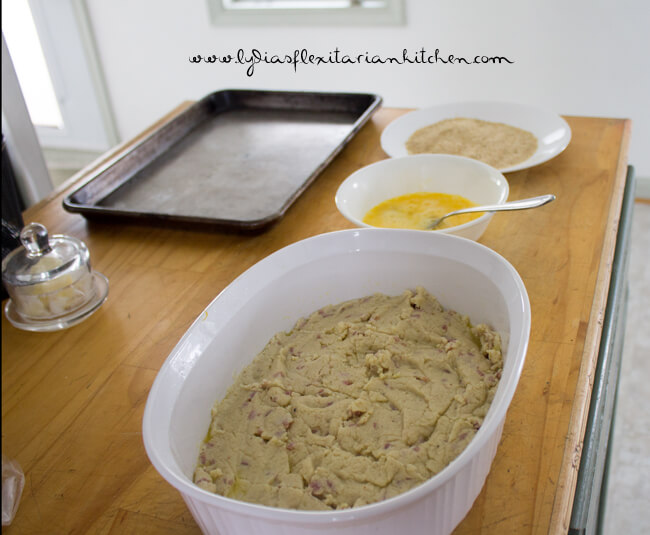
Method:
- Heat 1/2 cup of olive oil in a medium saucepan over medium heat.
- Add the flour and cook for 2 – 3 minutes, stirring constantly. It will be rather thick.
- Add the chicken broth and milk gradually, stirring the whole time. It should start looking more like a dough instead of a very thick sauce.
- Cook over medium heat a couple minute more, stirring frequently until smooth.
- Add the jamon and mix. Cook a few minutes more.
- Add the salt, pepper and nutmeg.
- Remove from the heat and spread into an 8″ x 8″ or similar sized baking dish. It will look like a hot mess, but will transform into something wonderful when it’s fried.
- Cover the pan and refrigerate until it’s fairly firm and can be handled.
- When ready to cook, remove the croqueta dough from the fridge and allow to stand while you set up a standard breading station. You’ll need a bowl for the beaten egg, a plate for the bread crumbs and another plate or baking sheet to hold the breaded croquetas.
- Use a knife to portion the dough into a dozen pieces. (I cut them like brownies.)
- Remove a piece and form it into a cylinder, then dip it in the egg, then the bread crumbs. Make sure you get a good coating on the croqueta otherwise you may get a pocket of oil inside and nobody wants to bite into that.
- In a restaurant setting these would be deep fried. At home, I use a sauce pan large enough to hold two or three croquetas at a time with about an inch of oil in the bottom. I fry one side, then turn it over and fry the other. You want the oil to be a little bit higher than half the height of the croquetas or you’ll get a line. (You can tell from the photo I skimped a little on the oil).
- Heat the oil until the surface shimmers, then gently add the croquetas. Fry for a minute or two on each side. Adjust the heat if they get too brown too fast. When nicely golden brown, remove the croquetas to a paper towel lined plate to drain. You could sprinkle with a little more salt if you like.
- Serve when cool enough to handle with your fingers.
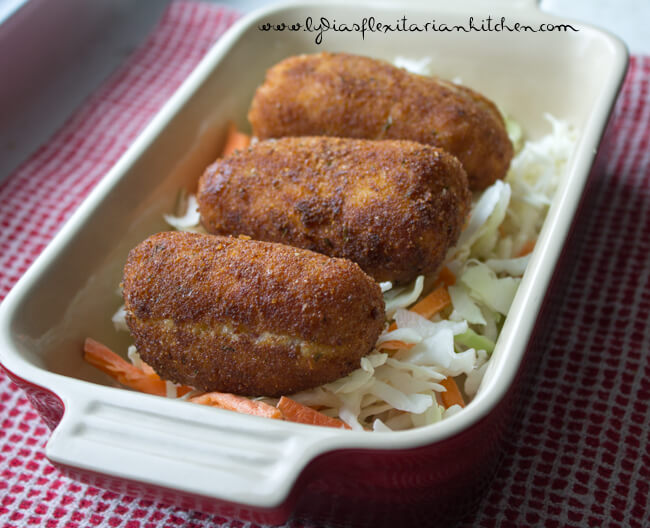
I hope you enjoyed this little jaunt into Simancas. For more information about the town, visit their web site. Google translate does an okay job.
The province of Valladolid is loaded with castles and walled towns. Some are in ruins but some, like Pedraza, have built a nice tourist industry. Rick and I are more than happy to take these little day trips. There always seems to be something beautiful to look at and something delicious to eat and drink wherever we go.

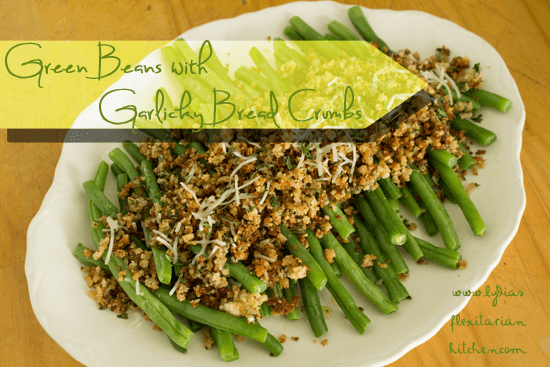
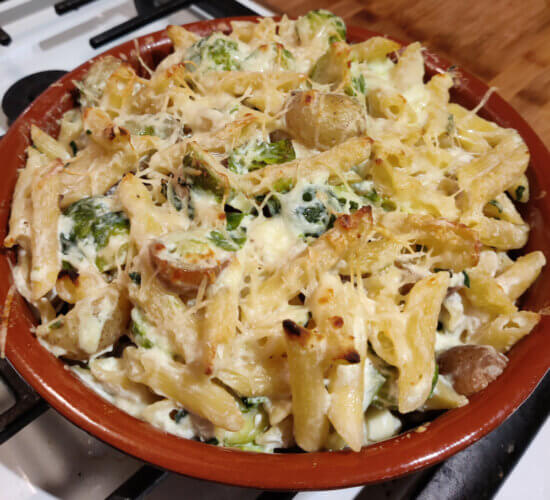
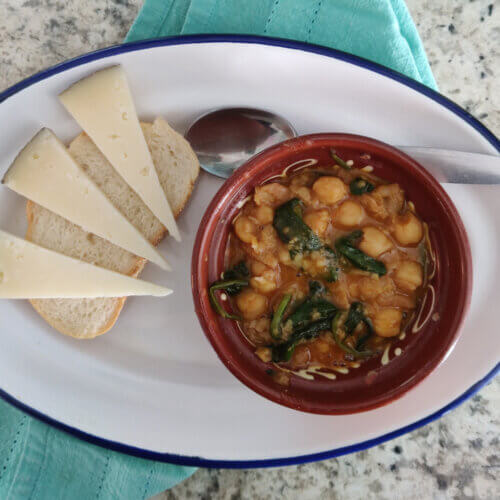
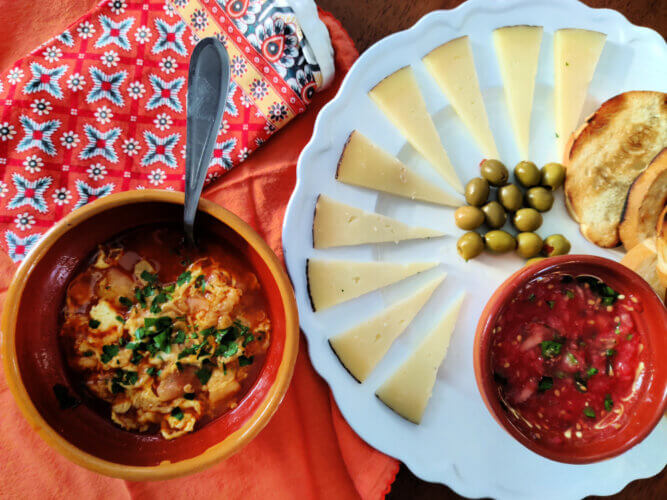
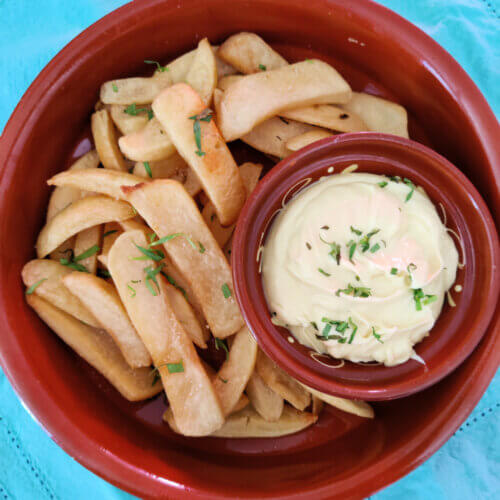
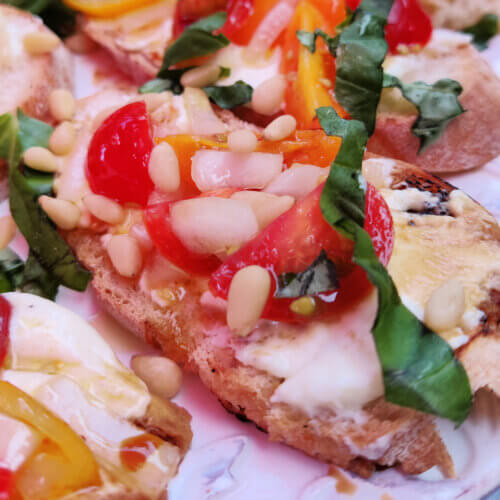
This looks delicious! Lovely photos too
Thank you. We enjoy taking day trips, especially when wine and a great meal are involved 🙂
Those look delicious, and I loved seeing your pictures and the history of this town you visited. Thanks for linking up with the Bloggers Brags Pinterest Party. I have pinned your post to the Bloggers Brags Pinterest Board!
The castillo is beautiful! And the croquetas look delicious. Thank you for linking to the In and Out of the Kitchen Link Party. Hope to see you next time.
Thank you! It’s a fun party 🙂
Wow, these look delicious Lydia! Thank you so much for sharing them with us at Best of the Weekend. Pinned to our party board. 🙂
Thank you, Lisa 🙂
These look awesome. Thanks for linking to What’d You Do This Weekend. Hope to see you next week.
Linda
They were great! And not too much trouble 🙂 Thanks for dropping by!
These look sooo tasty and delicious! definitely giving them a try! Oh my that is just horrible to think about ugh! Yes we have definitely come a long way!
I’m glad they’re a bit involved to make at home because I’d eat them a lot more often! Thanks for dropping by 🙂
These look and sound so delicious. Thank you so much for sharing the recipe at Tasty Tuesday. I am featuring it this week. Hope you’ll drop by this week and share some more fabulous recipes with us.
Hope you have a great week. See you at the party.
Thank you for the feature! I’m glad you like the croquetas 🙂
Being of Cuban descent we eat croquetas all the time but these look so delicious, I definitely want to try them out this weekend!! Stopping by from the Fresh Friday hop!
It looks like you all had fun! I love the pictures and those croquetas look so delicious! I’ve had something similar to this but I’m definitely going to have to try these!
I’ve only had the potato based croquettes before, although I’m sure the ones my mother made back in the 60s were sauce based. Let me know how they turn out for you, Cara. Thanks for dropping by 🙂
These look so good! Thanks for sharing and co-hosting the linkup this week! Following you on google+!
Sandra
http://www.notesfromtheslife.com
They were delicious! Thanks for the follow and for taking the time to comment 🙂
Thank you for linking up at Tasty Tuesdays! Your post has been pinned to my Recipes from Tasty Tuesday board. I can’t wait to see what you link up next week!
Have a terrific weekend!
Cathy
APeekIntoMyParadise.com
#TastyTuesdays
My mother used to make these with chicken or veal. I haven’t had one in ages. I don’t fry very many things, but would for these. I’ll have to try this recipe very soon.
I remember my mother doing the same thing. They were conical shaped and served with a gravy. Thanks for dropping by and taking the time to leave a comment 🙂